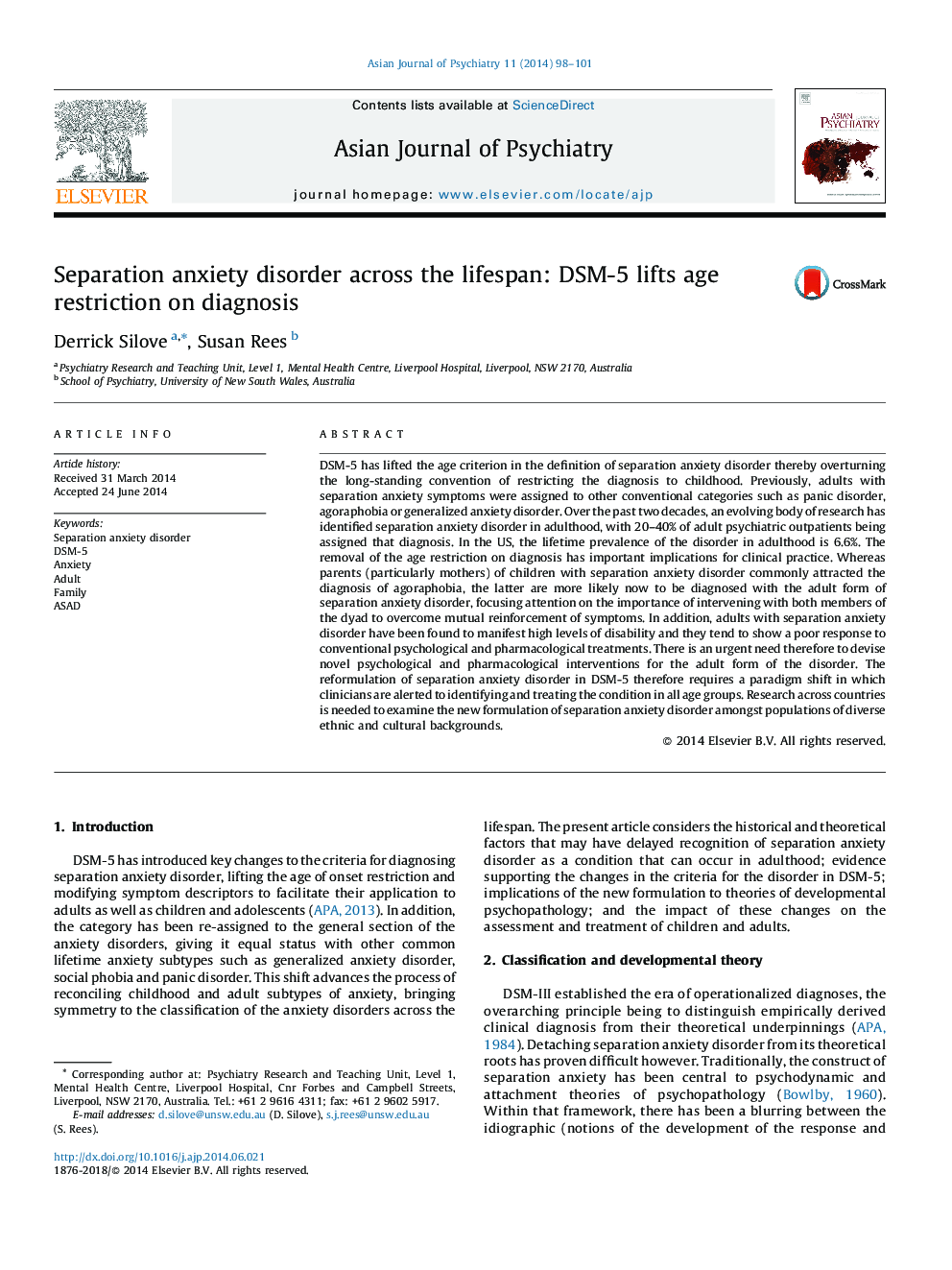| Article ID | Journal | Published Year | Pages | File Type |
|---|---|---|---|---|
| 316833 | Asian Journal of Psychiatry | 2014 | 4 Pages |
DSM-5 has lifted the age criterion in the definition of separation anxiety disorder thereby overturning the long-standing convention of restricting the diagnosis to childhood. Previously, adults with separation anxiety symptoms were assigned to other conventional categories such as panic disorder, agoraphobia or generalized anxiety disorder. Over the past two decades, an evolving body of research has identified separation anxiety disorder in adulthood, with 20–40% of adult psychiatric outpatients being assigned that diagnosis. In the US, the lifetime prevalence of the disorder in adulthood is 6.6%. The removal of the age restriction on diagnosis has important implications for clinical practice. Whereas parents (particularly mothers) of children with separation anxiety disorder commonly attracted the diagnosis of agoraphobia, the latter are more likely now to be diagnosed with the adult form of separation anxiety disorder, focusing attention on the importance of intervening with both members of the dyad to overcome mutual reinforcement of symptoms. In addition, adults with separation anxiety disorder have been found to manifest high levels of disability and they tend to show a poor response to conventional psychological and pharmacological treatments. There is an urgent need therefore to devise novel psychological and pharmacological interventions for the adult form of the disorder. The reformulation of separation anxiety disorder in DSM-5 therefore requires a paradigm shift in which clinicians are alerted to identifying and treating the condition in all age groups. Research across countries is needed to examine the new formulation of separation anxiety disorder amongst populations of diverse ethnic and cultural backgrounds.
